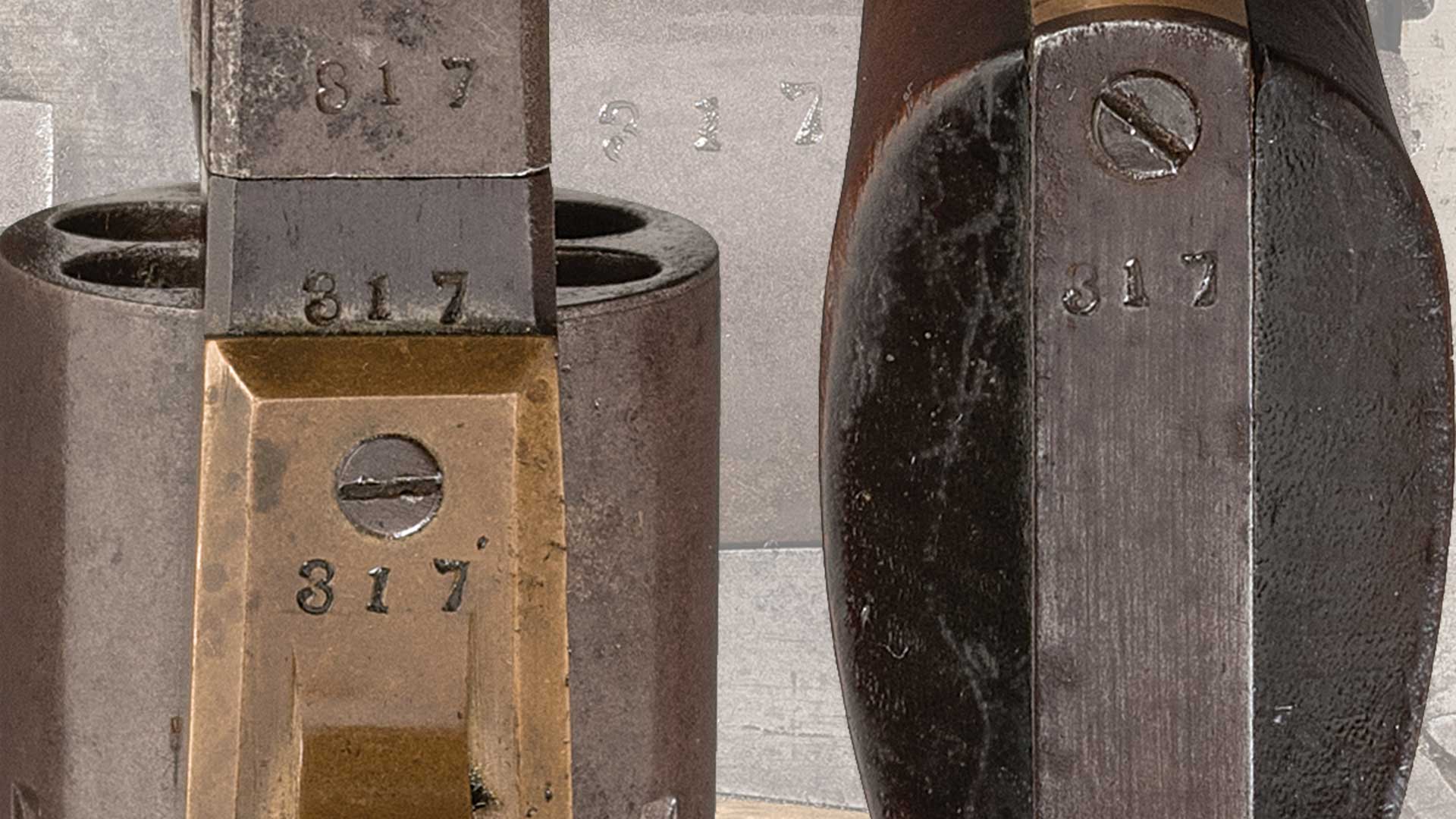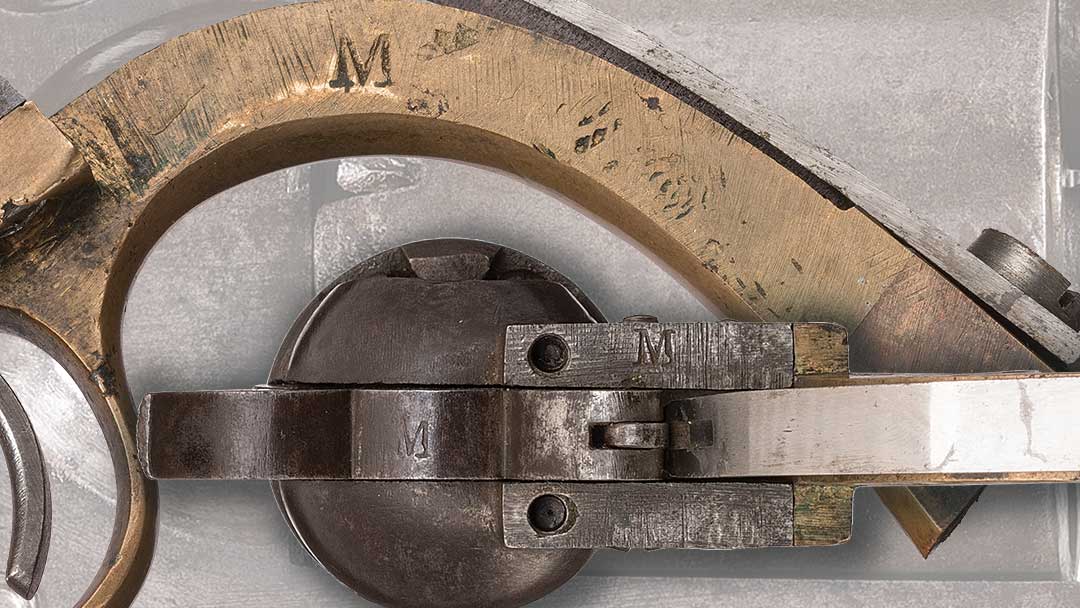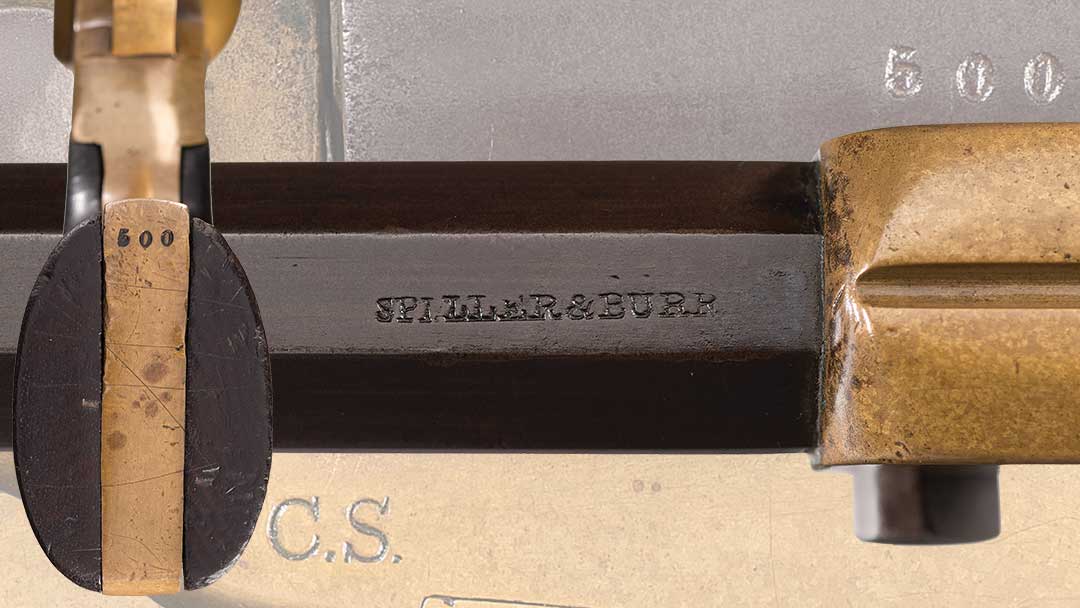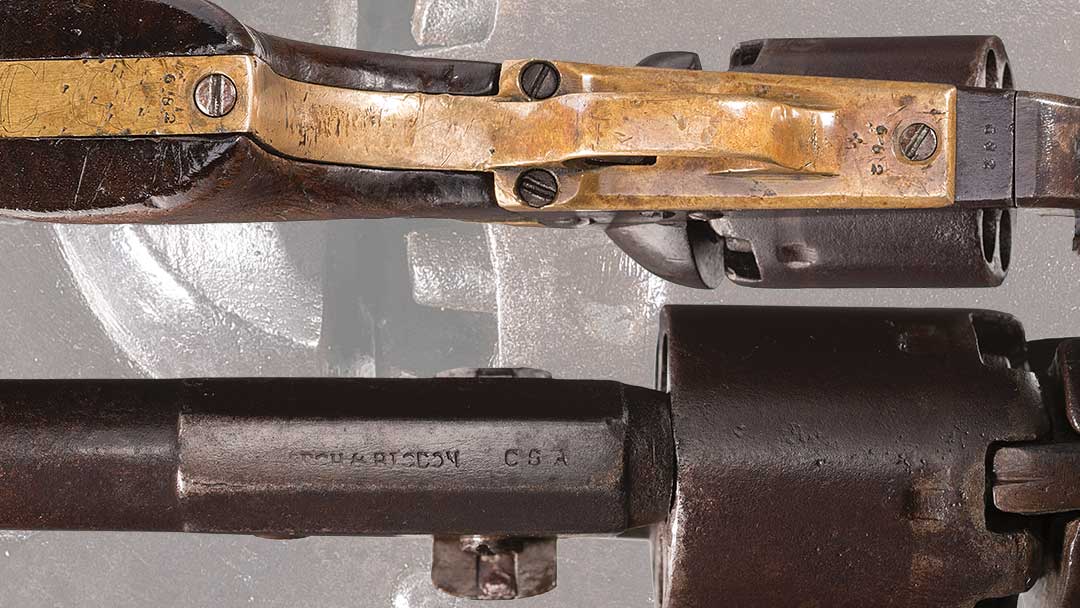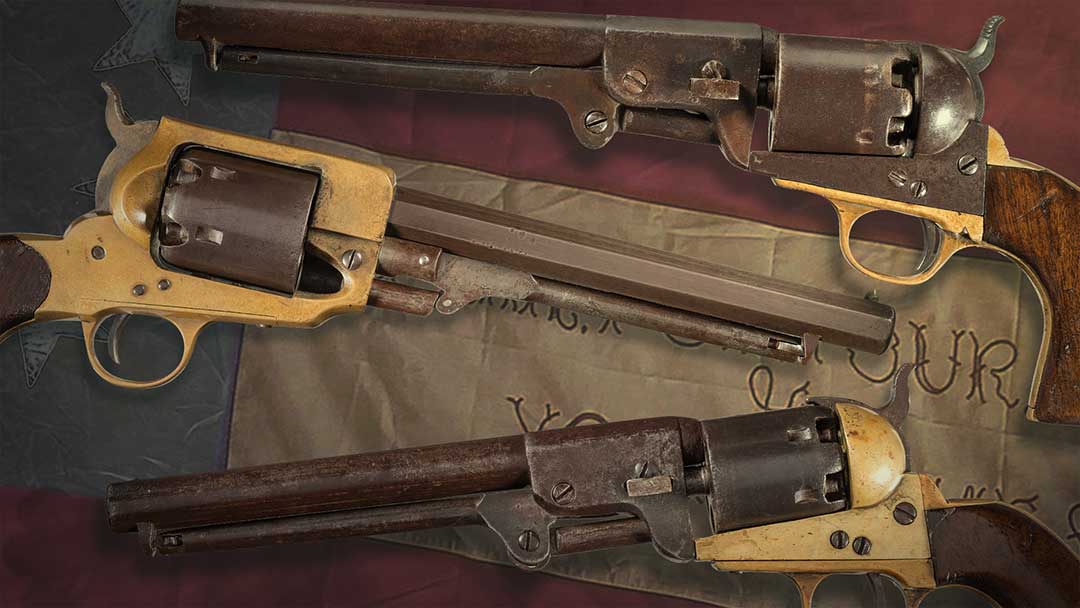Unlike the industrialized North, the Confederacy had fewer factories, a scarce iron supply, and a decentralized manufacturing base. As a result, the Southern States faced a critical shortage of firearms and artillery throughout the Civil War.
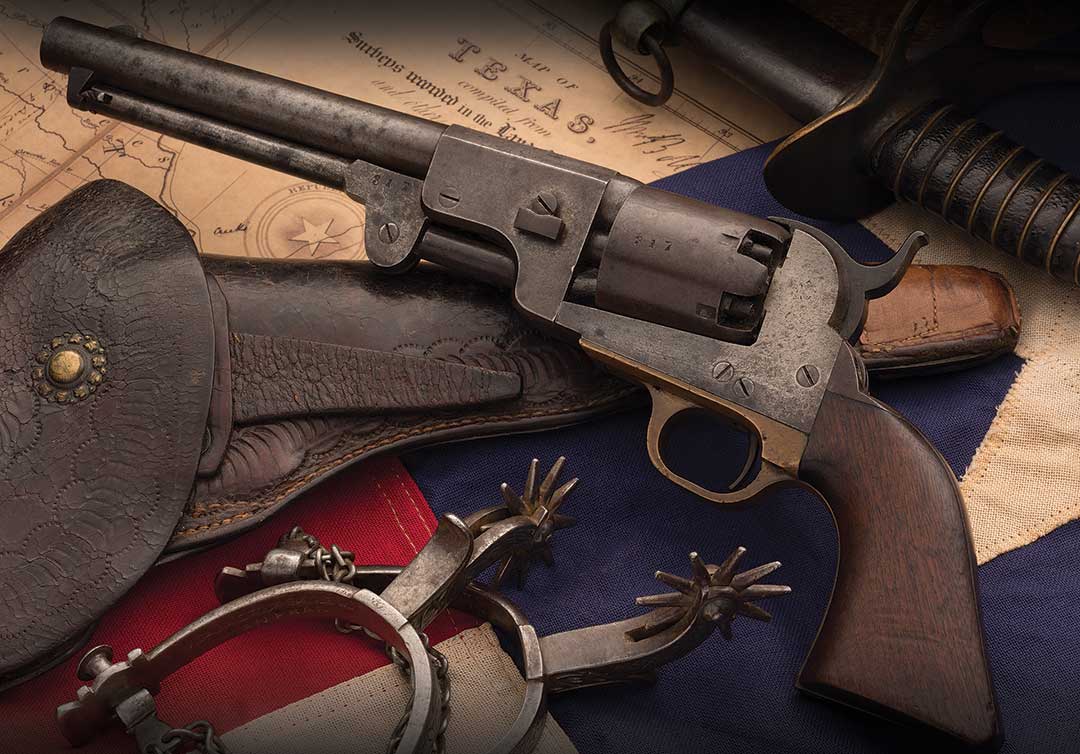
Trade with the South was restricted in the months leading up to the Civil War, and President Lincoln’s subsequent blockade slowed Confederate arms imports down to a trickle. This created a wealth of opportunity for any Southern manufacturer who could produce guns using the limited materials available. And given the prominence of Confederate cavalry early in the war, a steady supply of revolvers was in especially high demand.

Union Blockade
In the North, manufacturing giants like Colt, Remington, and Smith & Wesson produced the overwhelming number of Civil War revolvers, with Colt dominating by a substantial margin. Though the vast majority of Colt Model 1860 Army and 1851 Navy revolvers went to the Union, Samuel Colt sold guns to all parties until late April of 1861, when media outcry and accusations of Southern sympathies finally became too damaging to ignore.
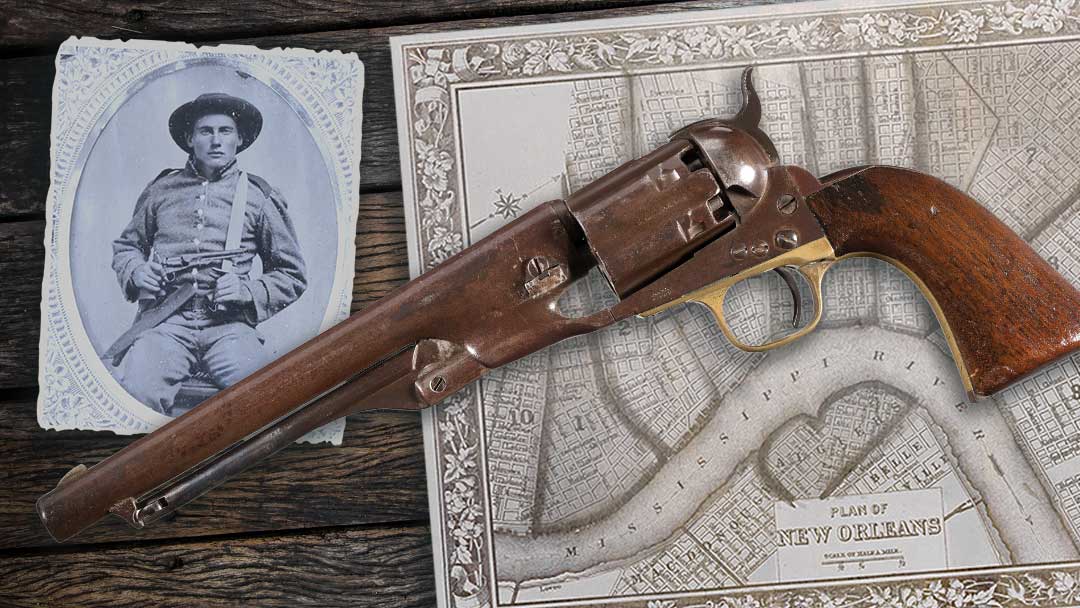
With smugglers and blockade runners unable to meet Confederate wartime demand, a number of small workshops, factories, and even individual gunsmiths throughout the South stepped up to the challenge. Some shortcuts were inevitable though, and one solution Confederate gun makers embraced was to ignore patent law and reproduce existing designs from Northern arms manufacturers.
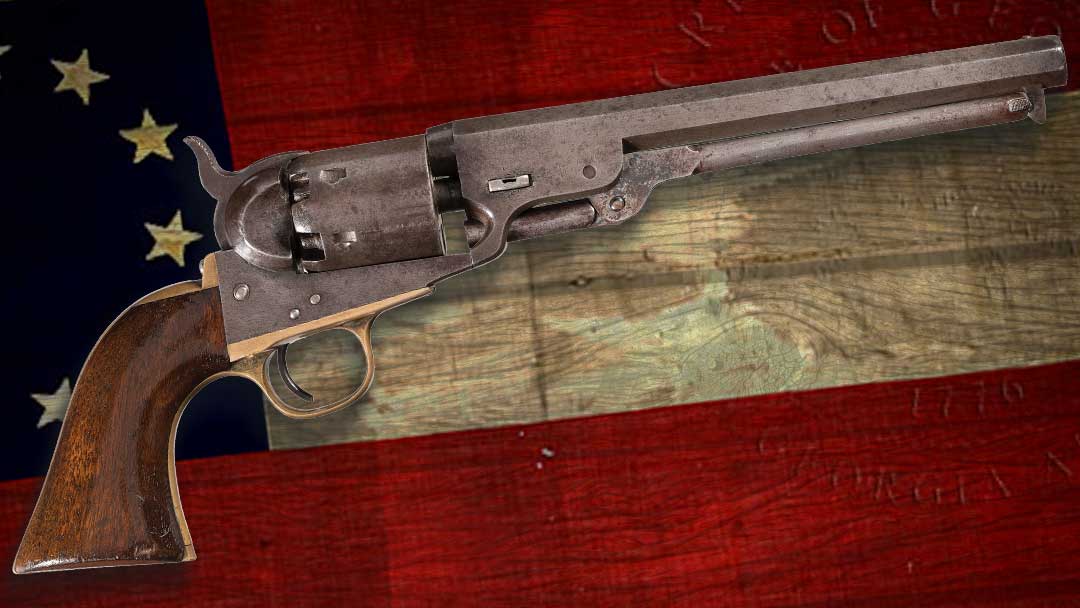
More than strict reproductions, Confederate revolvers have a distinct style and personality that’s immediately evident to any fan of antique wheelguns. Shortages of iron and graded steel led to brass pistol frames and other brass componentry. Smaller-scale manufacturing practices and rapid production often resulted in slight mechanical differences between guns of the same model. Due to their history and extreme rarity, surviving Confederate revolvers are some of the most sought-after treasures in arms collecting today.
The Griswold Revolver
The largest number of Confederate revolvers came from a firm run by Samuel Griswold and Arvin Gunnison out of Griswoldville, Georgia. Griswold & Gunnison produced approximately 3,700 revolvers, making them the most prolific Confederate handgun manufacturer during the Civil War. Perhaps the most well-known type of Confederate revolver model, the Griswold was patterned off of the Colt Model 1851 Navy and features a brass frame, trigger guard, and back strap.

According to the book, ‘Confederate Presentation & Inscribed Swords & Revolvers,’ the Griswold & Gunnison revolver on offer from Rock Island Auction Company this May belonged to a private from Tuscaloosa, Alabama named John A. Morris. Private Morris joined Company G 1st Regiment Mississippi Partisan Rangers on September 1, 1862, which became Company E 7th Mississippi Cavalry later in the war.
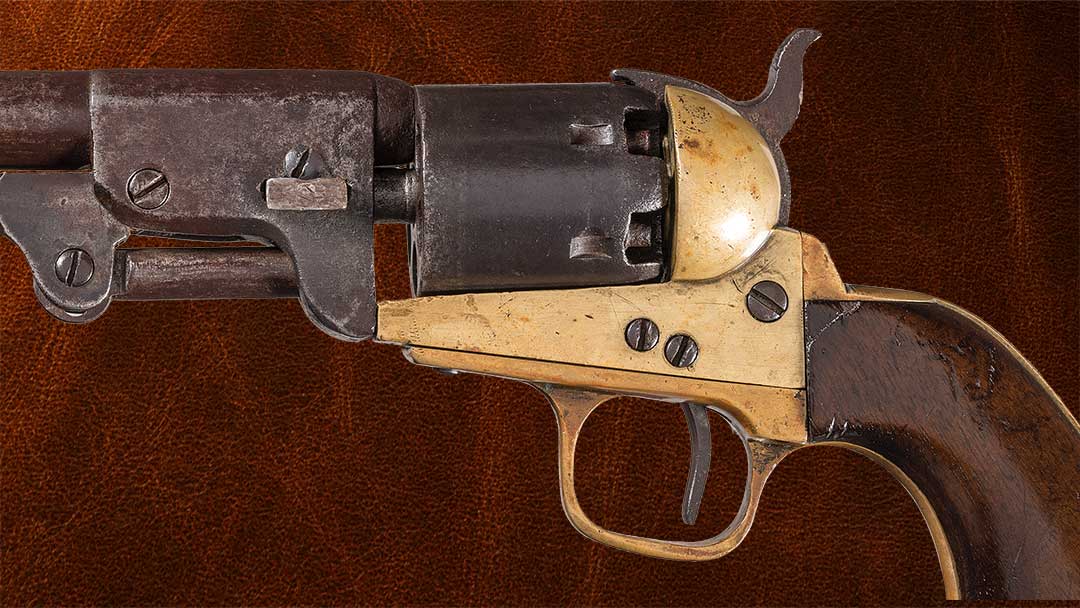
Private John A. Morris carried this revolver until his surrender at Holly Springs, Mississippi, on May 4th, 1865, an impressive history for an already rare collector’s piece. Included with this Griswold & Gunnison revolver are letters of provenance, a copy of one of Morris’ military identification cards, and a Mississippi Department of Archives soldier search paper with John A. Morris listed as “Co. E, First Partisan Reg’t.”
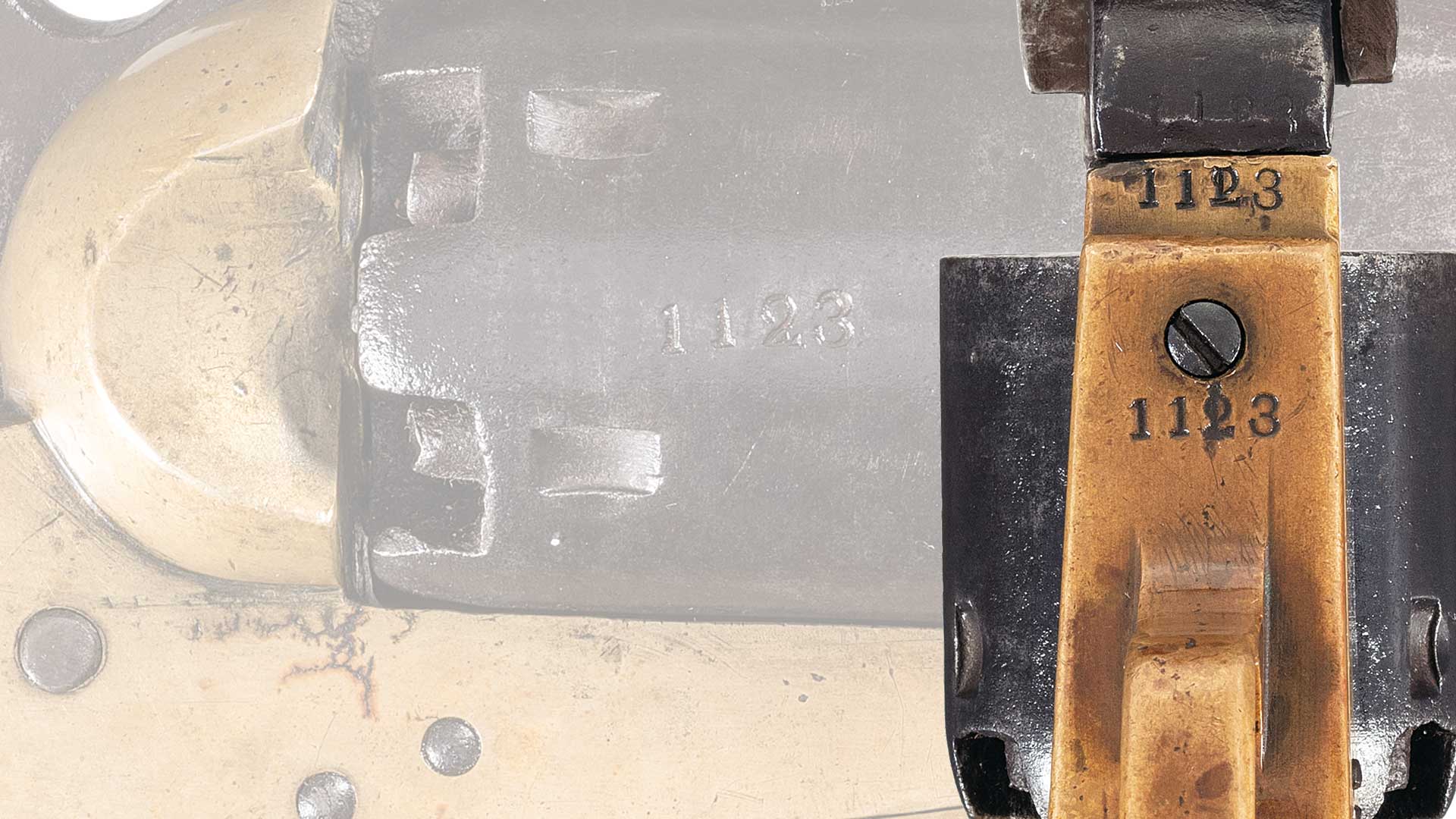
Dance & Brothers Revolver
The exact number of Confederate Dragoon style revolvers manufactured by J.H. Dance & Brothers of Columbia, Texas, is unclear. According to ‘Confederate Handguns,’ by Albaugh, Benet, and Simmons, the highest known serial numbered Dance & Brothers .44 caliber revolver is 324, making these revolvers one of the scarcest Confederate models produced.
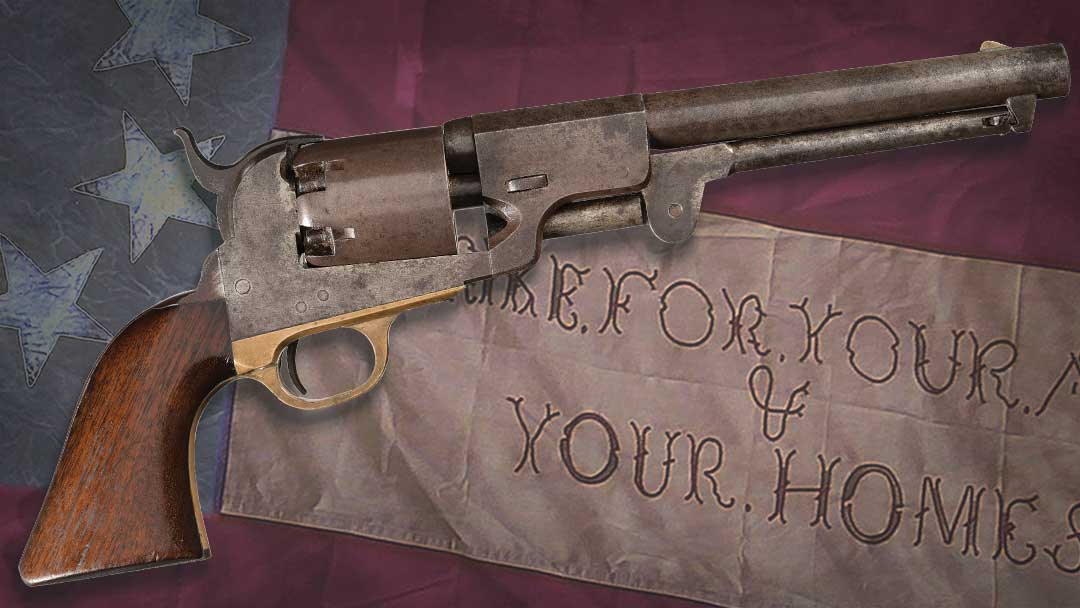
The Dance & Brothers revolver featured in Rock Island Auction Company’s May Premier is pictured and described in Daniel D. Hartzler’s book, ‘Confederate Presentation & Inscribed Swords & Revolvers’ on pages 260-261. The revolver is believed to have belonged to Private Michael C. Bell, who enlisted on July 6, 1863, at Brenham, Texas, and served in F Company 23rd Brigade of the Texas State Troops. The 23rd Brigade fought in the Western Theatre, including in Louisiana during the Red River Campaign.
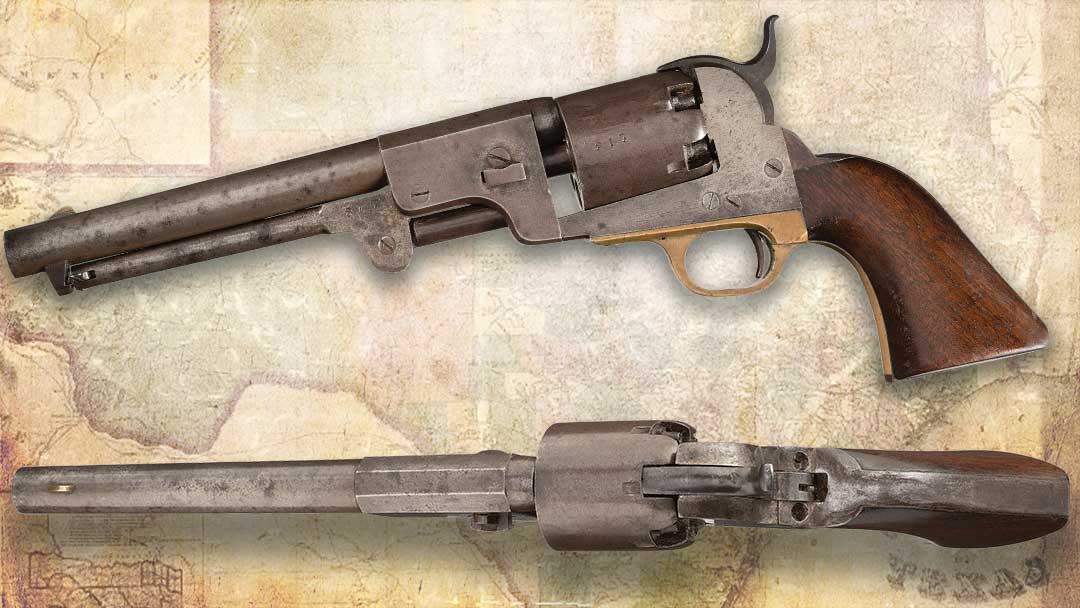
In the final year of the war, Bell’s company dismounted and eventually surrendered as part of General Edmund Kirby Smith’s forces on May 26, 1865. Since Bell was listed as on sick leave during this period, he would not have been present at the surrender and likely received this Dance & Brothers revolver during his leave. A stroke of good luck for Civil War gun collectors, since the revolver’s late issue date likely explains how it has survived in such remarkable condition for a Confederate sidearm.
Augusta Machine Works Revolver
The distinctive Augusta Machine Works Confederate revolvers were manufactured between 1861-1864, with fewer than 100 produced. Based on Samuel Colt’s Model 1851 Navy, many Civil War collectors consider the Augusta Machine Works revolver to be the finest sidearm manufactured by the Confederates.

Though Augusta Machine Works is thought to be the likely producer of these rare revolvers, the pistols are not marked with a maker’s name. The Confederate Government owned a factory in Augusta, Georgia, known as the Augusta Machine Works, and the Augusta origin hypothesis, established in 1963 by authors William A. Albaugh, Hugh Benet, Jr., and Edward N. Simmons, is generally well regarded.

Augusta Machine Works revolvers are distinctive next to all other Confederate pistols due to the shape of their squared off grip frame, their 7 ¾ inch barrel length, and their close tolerance fit and finish. All numbers and letters found on Augusta Machine Works revolvers are not visible until the gun is disassembled and are usually of a single character, meaning these markings were likely intended more for the assembly process than for serial purposes.
Spiller & Burr Revolver
In 1861, Lt. Col. James H. Burton, Edward N. Spiller, and David J. Burr launched a factory in Richmond, Virginia in an attempt to manufacture revolvers for the Confederacy. A short time later they relocated to Atlanta, Georgia. Production started with an optimistic government contract of about 1,500 revolvers in 1862, but operation was halted in November 1864 due to Sherman’s March to the Sea.
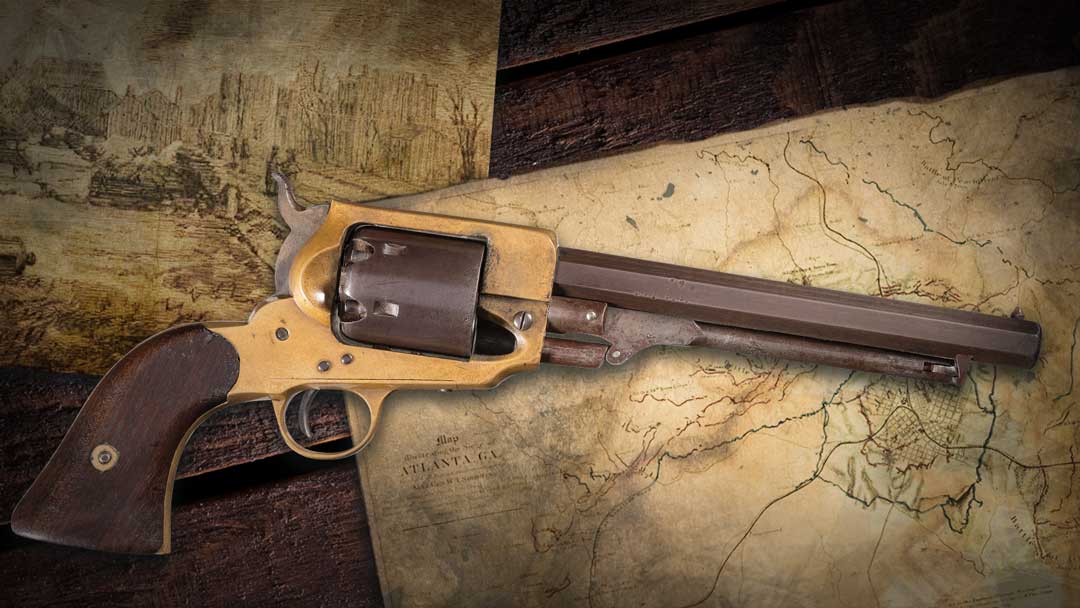
Edward Spiller was aiming for a rugged yet easy to produce design, and he selected the Whitney Arms Company Navy as the basis for the Spiller & Burr revolver. The primary differences are observed in the Spiller & Burr’s distinctive solid brass frame and the revolver’s cylinder composition, with Spiller & Burr opting to use iron cylinders rather than steel, as fine quality steel was in scarce supply.

The Spiller and Burr example included in May’s auction lineup features several intriguing stamps and markings that hint to the gun’s rich history, including five kill notches carved into the butt of the revolver. A sidearm that saw some action in the field, no doubt, like most Confederate revolvers of its kind.
The Leech and Rigdon Revolver
In 1861, Thomas Leech established the ‘Memphis Novelty Works’ with scale maker Charles Rigdon in Memphis, Tennessee, and began crafting Confederate cavalry swords. Sword production was interrupted after the following year when Union forces closed in on the city, forcing Leech and Rigdon to relocate their operation to Columbus, Mississippi, and then to Greensboro, Georgia, where Charles Rigdon shifted his attention to producing Confederate revolvers.
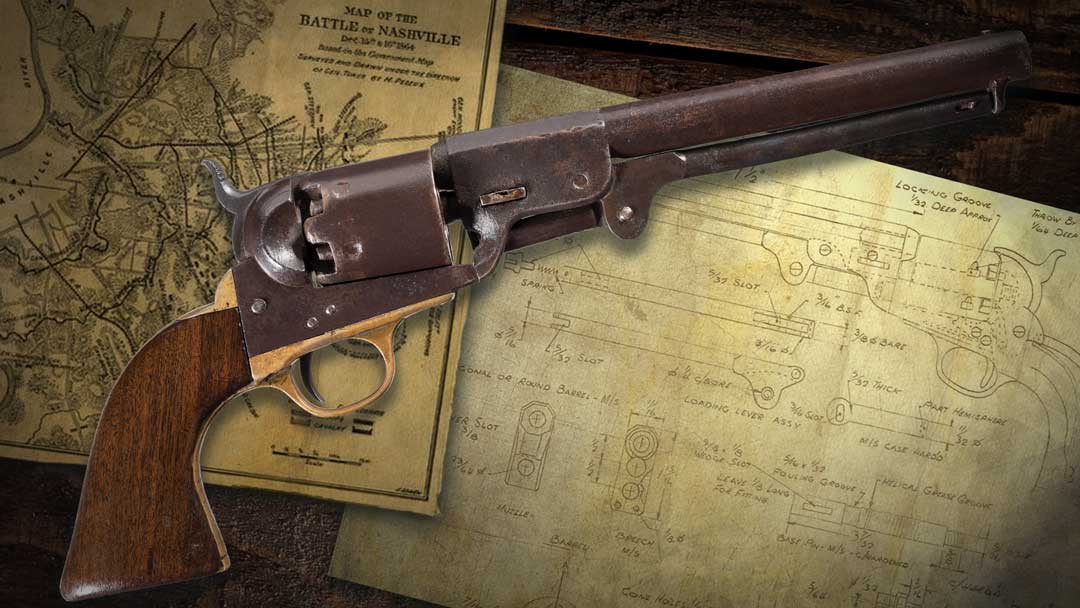
Among the most highly sought-after Confederate firearms, only 1,500 Leech & Rigdon revolvers were manufactured between 1863 and 1864. The Leech & Rigdon revolver design is another close copy of the Colt Navy Model, though with a distinct round barrel with an octagonal top barrel housing similar to the Colt Dragoon.
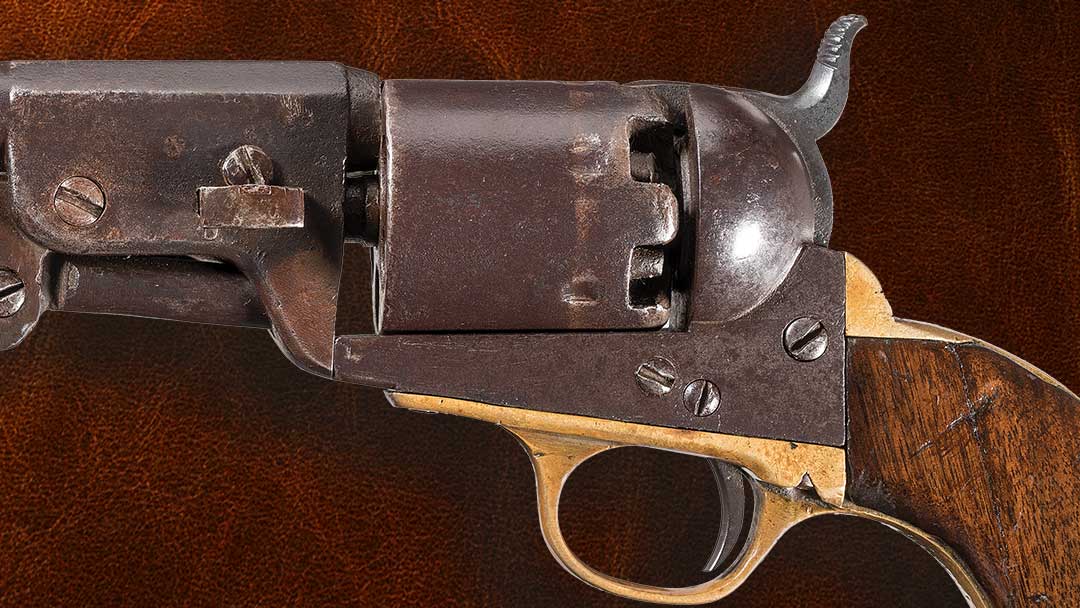
On December 13, 1863, Thomas Leech abruptly withdrew from the company. Why the venture ended is unclear, but Charles Rigdon quickly found new business partners and announced the formation of “Rigdon, Ansley & Co” in Augusta, GA, and continued to manufacture an updated variation of these fascinating revolvers.
Rigdon, Ansley and Company Revolver
When the transition occurred between Leech & Rigdon to the Rigdon, Ansley & Co. revolvers, several small design improvements were made that today help collectors to differentiate between the two.

First, Leech & Rigdon revolvers used a standard six cylinder stops, no cap channel in the face of the recoil shield, and a loading lever retained by a “pin and ball loading lever latch” (think ball detent). On the other hand, the subsequent revolvers made by Charles Rigdon and Jesse A. Ansley from 1864-65, utilized 12 cylinder stops (so they could be carried with all 6 chambers loaded), included a cap channel in the face of the recoil shield, and used a loading lever retention latch similar to those found on the Colt 1851 Navy.
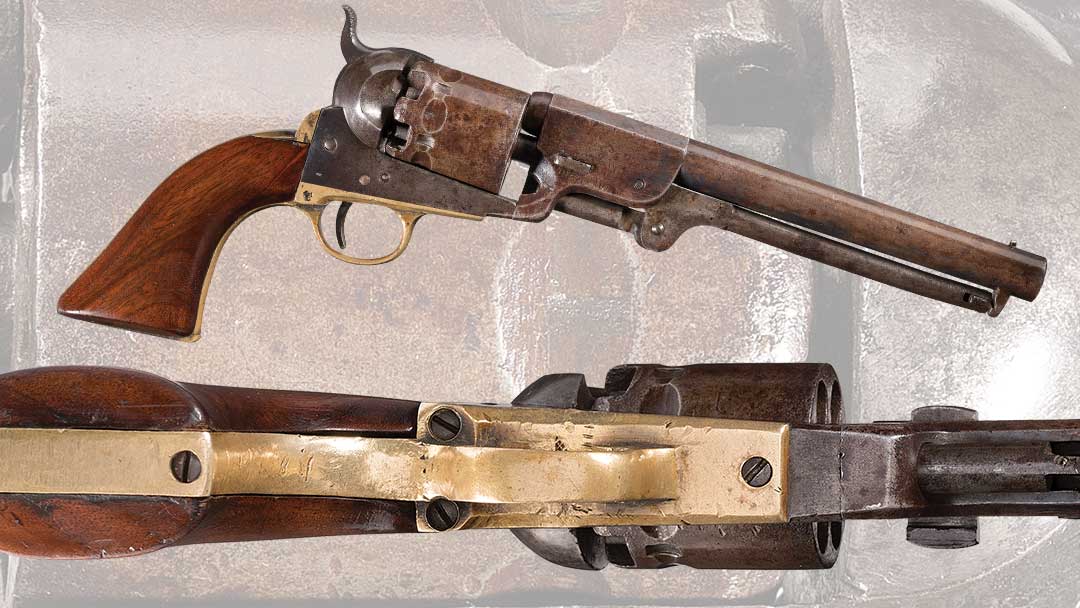
Like other Confederate revolver types, Rigdon, Ansley & Co. revolvers have slight mechanical differences that vary between each of the nearly 1,000 guns produced. These discrepancies were likely due to the scarcity of materials and skilled labor shortages that plagued the South throughout the war, making standardization immensely difficult.
LeMat Revolvers
The LeMat revolver is one of the most distinctive Confederate pistols thanks to its unusual central smoothbore “grape shot” barrel. This fascinating firearm was carried by numerous Southern military generals and officers such as P. G. T. Beauregard, Braxton Bragg, and J. E. B. Stuart.

Designed by Dr. Jean Alexandre LeMat of New Orleans, these unique revolvers were primarily produced in Liege, Belgium, and Paris, France, and smuggled into the South during the Civil War. Period advertisements for the revolvers refer to them as “LeMat’s Grape Shot Revolvers.”
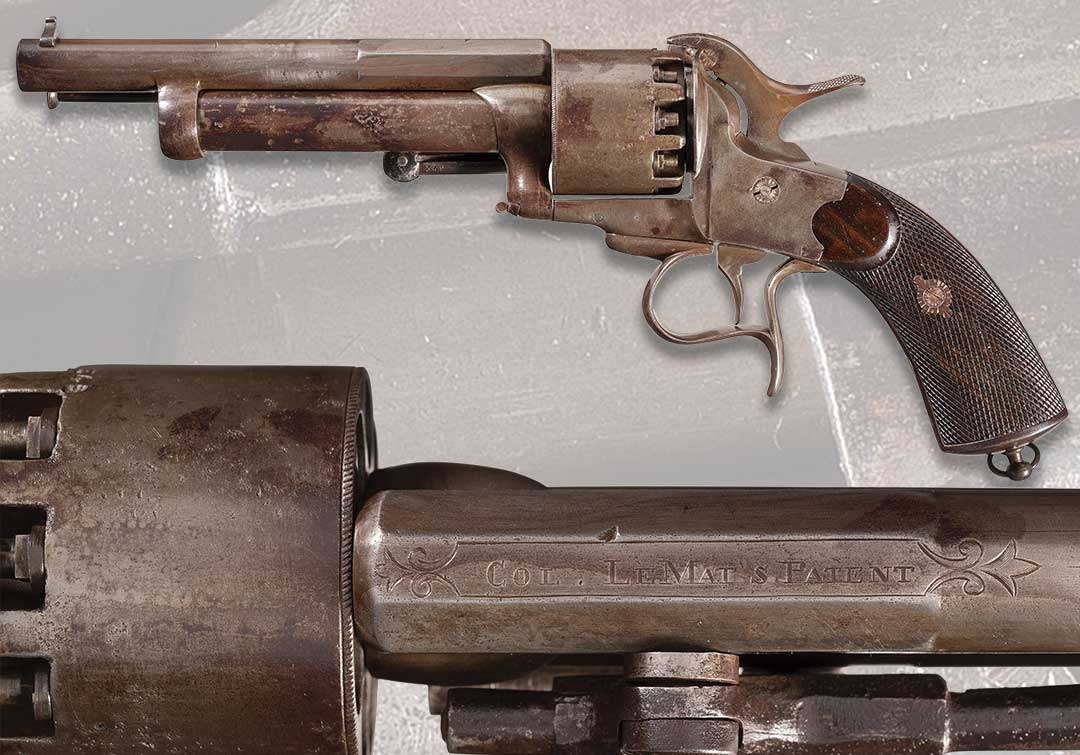
LeMat continued to pursue and alter his designs in the post-war era. The LeMat pinfire revolver was sold primarily in Europe, and LeMat introduced a centerfire variation of the design in the late 1860s that included a LeMat revolving carbine and the smaller “Baby LeMat” revolver.

LeMat’s centerfire revolver design was modified multiple times in the two decades following the Civil War, and the example offered in RIAC’s May Premier Auction is similar to the design shown in the 1871 French patent extension. Like their famous percussion predecessors, these centerfire LeMat revolvers have a combination of a rifled barrel fed by a revolving cylinder and a central shot barrel.
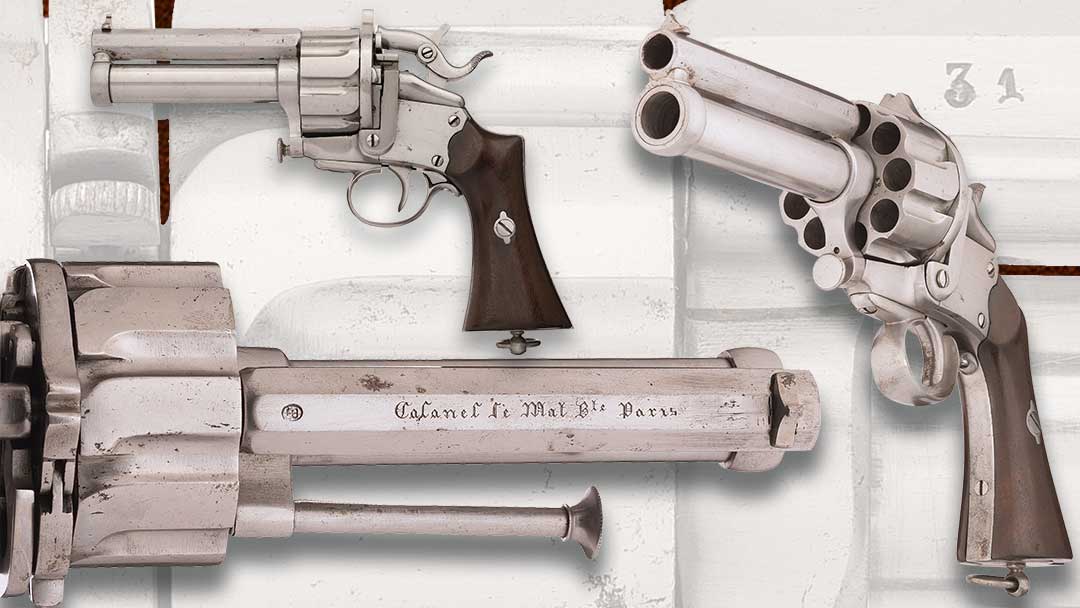
Buying and Selling a Confederate Revolver
While Griswold & Gunnison, the largest producer of Confederate revolvers, was able to make around 3,700 pistols between 1862 and 1864, Colt delivered 127,000 Colt Model 1860 Army revolvers to the Union throughout the war. Though the North’s industrial advantage proved impossible to overcome, that didn’t stop some entrepreneurial Southern arms makers from trying.
Any Southern made Confederate revolver is a true rarity today, and Rock Island Auction Company’s May 13-15 Premier Firearms Auction features examples from six different manufacturers, one of the most comprehensive collections of Confederate revolvers even offered to the collecting public. From scarce sidearms to Civil War cannons to some of the finest carbines of the era, May’s auction event is a can’t miss opportunity for antique arms collectors and firearm fans of every stripe. Keep an eye out for the online catalog in the weeks ahead, and get ready to experience the highest level of history and artistry that the industry has to offer.
SOURCES:
Bill Gary, Confederate Revolvers
David and Celeste Topper, Civil War Relics from Georgia
William A. Albaugh, Hugh Benet, Jr., & Edward N. Simmons, Confederate Handguns
Daniel. Hartzler, Confederate Presentation & Inscribed Swords & Revolvers
